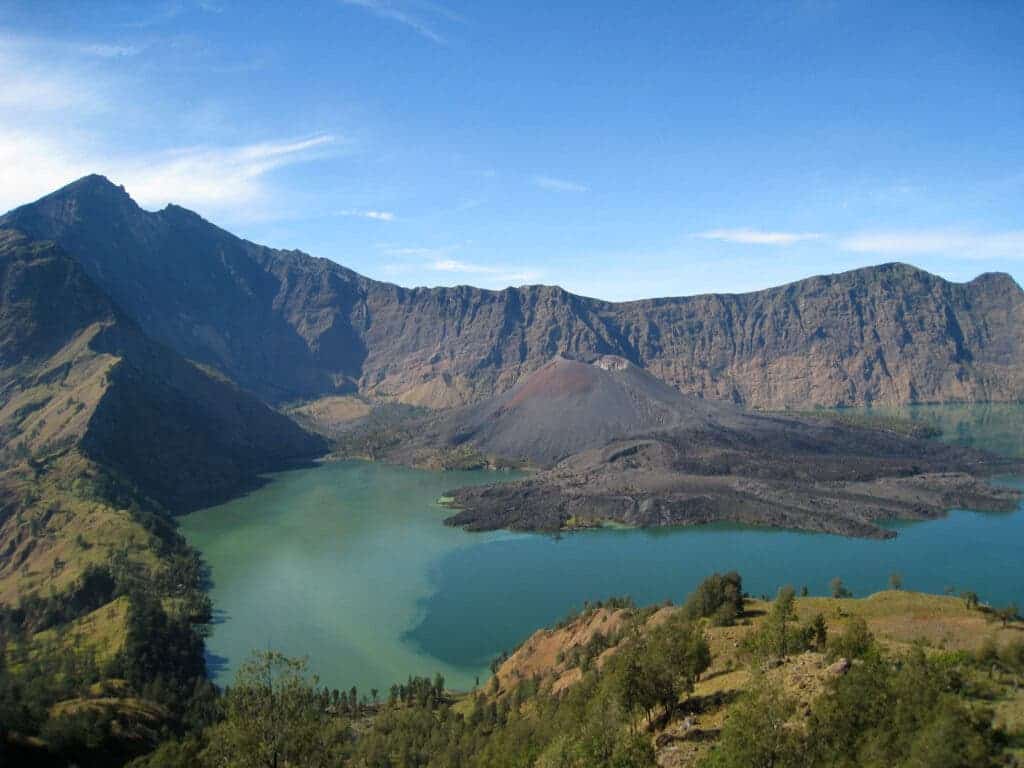An immense volcano erupted in the year 1257 AD. It ejected huge amounts of gases, as well as ash and pumice, creating a blanket around the entire planet and affecting its climate. It was potentially the largest eruption in the past 7,000 years — but which volcano was it?
Usually, it’s pretty clear which volcano is responsible for big eruptions, but in this case, researchers weren’t sure until recently. Using multiple lines of evidence, they now believe the Samalas volcano in Indonesia was the culprit.

A forgotten Pompeii in the Far East
When a volcano erupts, it spews out gases and minerals that eventually fall onto the ground. In large eruptions, these products can travel hundreds or even thousands of kilometers before landing — and in the very largest eruptions, the entire planet is covered in a thin layer of ash that can be traced back to the eruption.
This was the case with a mysterious eruption from almost 800 years ago. Its traces were spotted at both poles, in ice cores coming from both the Arctic and the Antarctic. Because a new layer of ice is laid every year in these areas, researchers can date individual layers very accurately, which also allows them to date events such as volcanic eruptions.
Volcanic deposits were dated to 1257/1258 AD, and the eruption seemed to be extremely powerful — eight times stronger than Krakatau (in 1883) and two times stronger than Tambura (in 1815). Researchers also corroborated the data from ice cores with evidence from tree rings and computer models, confirming the year of the eruption. But identifying which volcano was responsible was still a challenge — until researchers analyzed an old historical record called Babad Lombok.
Written in Kawi (or Old Javanese) on palm leaves, Babad Lombok details the history of the Lombok island. Lombok is an island in West Nusa Tenggara province, Indonesia, home to almost 4 million people. The palm leaves record focus mostly on religion, but they also detail the catastrophic eruption.

“Mount Rinjani avalanched and Mount Salamas collapsed, followed by large flows of debris accompanied by the noise coming from boulders. These flows destroyed Pamatan. All houses were destroyed and swept away, floating on the sea, and many people died. During seven days, big earthquakes shook the Earth, stranded in Leneng, dragged by the boulder flows, People escaped and some of them climbed the hills,” the text reads.
The Salamas caldera is still active, with eruptions still occurring today at this site. A volcanic cone is developing in the area, and the entire caldera is now partially covered with water, forming a lake. If the historic text was right and Salamas was the volcano responsible for the 1257 eruption, that’s where researchers had to look for more answers; and they did.
Fieldwork in the area showed rich volcanic deposits all over the region — deposits whose chemistry fit with the one found in the ice cores. The researchers also found no trees growing in the immediate period after the eruption, further supporting the idea of a cataclysmic eruption in the area.
When the team mapped the deposits and created a model of the eruption, they found that it must have risen 4,200 meters above sea level (13,800 feet), with the ash column going as high as 42 kilometers into the sky (it's plausible that it even went over 50 km) -- being visible (and potentially audible) for hundreds of kilometers. The eruption ejected some 40 cubic kilometers of material, the models suggested.
A massive eruption of this scale would have been catastrophic to the local populations. In addition to the eruption itself and all the ejected material, when the hot lava reached the seawater, it created scorching steam explosions. Then there was the pyroclastic flow, a hot mess consisting of ash, rocks, and gases moving at over 100 km/h; later there came the ash deposits (which reached 35 meters), and later still, the climate started to cool down. The locals didn't stand a chance. The capital of the Lombok Kingdom, a city called Pamatan, was wiped from existence. Researchers still haven't uncovered it yet, but if rediscovered, it could very well be a Pompeii of the East, they say.
"These results solve a conundrum that has puzzled glaciologists, volcanologists, and climatologists for more than three decades. In addition, the identification of this volcano gives rise to the existence of a forgotten Pompeii in the Far East," the study authors explain.

This eruption was one of the strongest in recent geological history. It ranks as a 7 on the Volcanic Explosivity Index, a logarithmic scale (i.e. a 7 eruption is 10 times stronger than a 6 eruption, and 100 times stronger than a 5 eruption). For comparison, Mount St. Helens is a 5, and the Yellowstone supereruption from 600,000 years ago is an 8.
"At least 40 km3 (dense-rock equivalent) of tephra were deposited and the eruption column reached an altitude of up to 43 km. Three principal pumice fallout deposits mantle the region and thick pyroclastic flow deposits are found at the coast, 25 km from source. With an estimated magnitude of 7, this event ranks among the largest Holocene explosive eruptions."
This isn't the first time Samalas was linked to the 1257 eruption. Previous studies from 2013 and 2016 also suggested this possibility, but until now, the existing evidence was scattered and unclear. This study does a great job at tying everything together, and showing how one of the most transformational events in the area unfolded and where it happened. It also hints at where the lost city of Pamatan could lie.
Volcanic eruptions like this one can change the course of history, and understanding them can help us not just understand previous eruptions and their impact better, but also help us know what to expect.
The study was published in PNAS.


